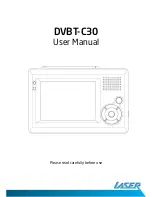
10
OPM-145/D
WARNING: FIRE HAZARD:
All wiring must be done by a licensed electrician, and must
conform to the National Electrical Code and comply with
all the local codes and regulations. Check with the local
authorities before proceeding.
INSTALLATION NOTES:
Because of many different types of service, feeder and
distribution equipment, no specific wiring instructions
can be provided. It is recommended that only copper
wire be used. In all cases it is essential that while the load
is connected to the generator, there can be absolutely
no feedback from the generator to the power line or the
power line to the generator. When properly installed, the
normal ATS Control and safety system will eliminate all
paths and feedback.
To wire the automatic transfer switch into existing wiring,
first determine which circuits will be on the emergency
load circuit. If the entire load is transferred, the transfer
switch can be wired directly after the meter and the service
entrance, providing the service entrance ampere rating is
within the transfer switch’s rated capability.
If only specific circuits are to be powered under emergency
power failure conditions, an additional distribution panel
designated “emergency distribution panel” must be
installed.
All selected emergency circuits are removed from main
distribution panels and installed in the emergency
distribution panel. The ATS is then installed between
the main panel and the emergency distribution panel.
Suggested circuits: freezer, refrigerator, furnace, emergency
lights, sump pump, emergency outlet circuits, etc. Total
running load must not exceed generator rating.
All connections must be clean and tight. Check the
electrolyte in the battery periodically to be sure it is
above the plates. Never allow the battery to remain in a
discharged condition.
CAUTION: EQUIPMENT DAMAGE
Never attempt to jump start this engine. If the battery
should accidentally become discharged, disconnect the
battery cables and recharge the battery before attempting
to start the unit. Boost/jump starting this unit improperly
will result in PERMANENT DAMAGE TO THE ENGINE
CONTROL MODULE (ECM).
BATTERY CHARGER
& BLOCK HEATER
BATTERY CHARGER
A three-stage, on-board marine battery charger is provided
standard on this unit. The charger is a 5 amp dual use
maintainer and charger designed to keep your batteries
fully charged by maintaining them automatically. Make
sure all DC battery connections are tight and clean. Follow
battery manufacturer’s recommendations. This charger is
mounted under the customer connection on the control
side of the generator. The charger will need to be plugged
to a customer’s power source, using a customer supplied
heavy duty, UL approved extension cord. The receptacle is
to be powered by a GFCI circuit and installed in accordance
to the US National Electric Code. It is suggested that this
circuit be fused to 20 Amps.
Low/Charge Mode:
The illuminated blue power LED and red low/charging LED.
This indicates the Low/Charge mode is in process. When
completed the RED Low/Charge LED will turn off.
Auto Maintain Mode:
The illuminated Green auto maintain LED. This indicates
your 12 volt battery is fully charged. During short or long
term storage periods, Auto Maintain (Energy Saver) mode
will monitor and auto maintain a battery only when needed
to maintain a full state of charge. This feature significantly
reduces AC Power consumption, lowers operating costs
and maximizes reserve power performance.
BLOCK HEATER
The block heater on this unit is a 1000 watt heater and
can use the same 20 Amp GFCI fused circuit. This circuit
will terminate on the 120 Volt terminal block mount in the
customer connection cabinet. The engine block heater
installed on this unit should also be plugged into this
receptacle. The block heater is thermostatically controlled
when plugged in will maintain the engine coolant
temperature between 100 and 120 degrees F.
TRANSFER SWITCH
NOTICE:
For full service switching of the entire load, the ATS must
be ‘SE’ (Service Entrance) rated or must have a properly
rated fusible disconnect installed before the ATS to protect
the contacts.











































